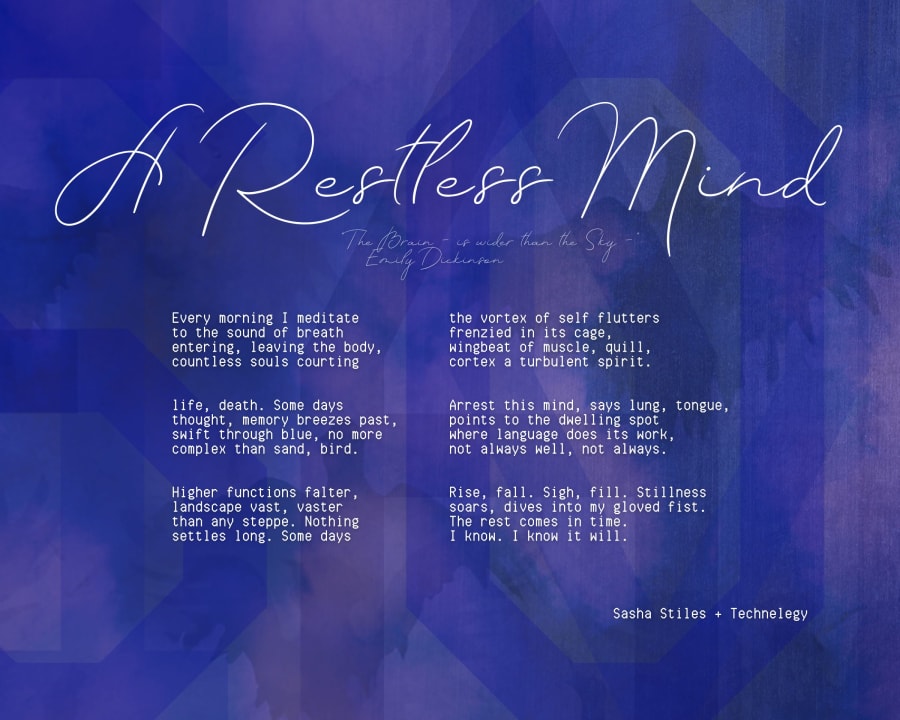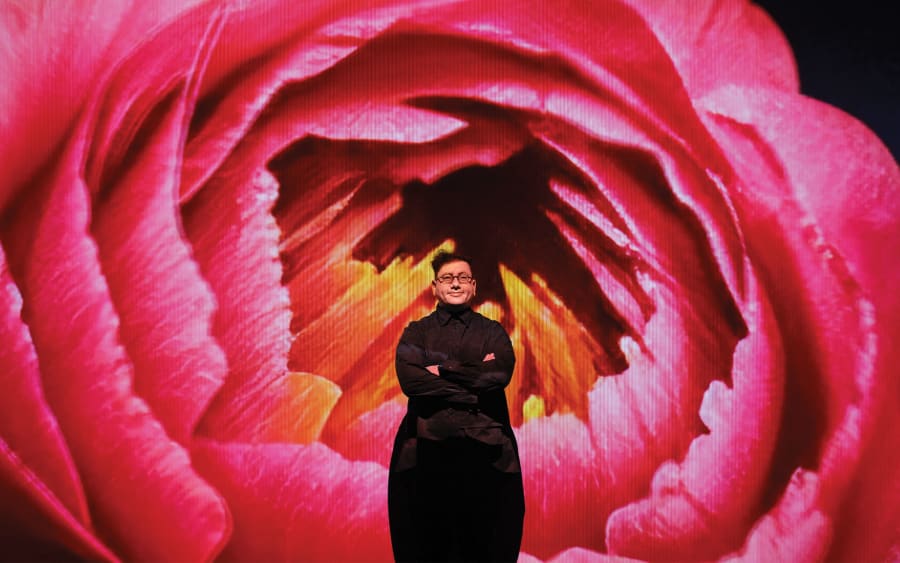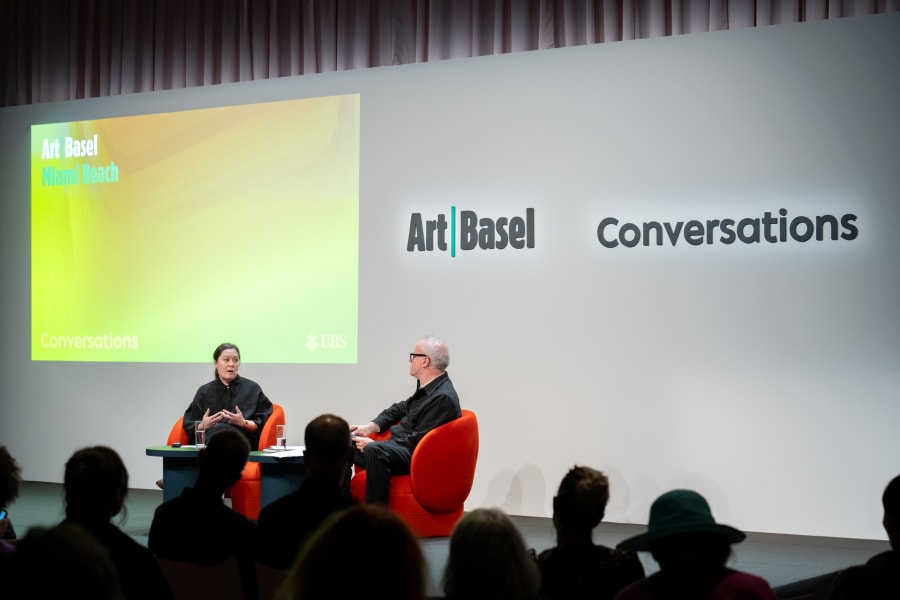
How artists are leveraging emerging technologies to realize their wildest dreams
Nifty Gateway Studio is helping some of the biggest names in the digital arena, like Refik Anadol, Sam Spratt, and Sasha Stiles, to develop ambitious projects

How artists are leveraging emerging technologies to realize their wildest dreams
Nifty Gateway Studio is helping some of the biggest names in the digital arena, like Refik Anadol, Sam Spratt, and Sasha Stiles, to develop ambitious projects

How artists are leveraging emerging technologies to realize their wildest dreams
Nifty Gateway Studio is helping some of the biggest names in the digital arena, like Refik Anadol, Sam Spratt, and Sasha Stiles, to develop ambitious projects

How artists are leveraging emerging technologies to realize their wildest dreams
Nifty Gateway Studio is helping some of the biggest names in the digital arena, like Refik Anadol, Sam Spratt, and Sasha Stiles, to develop ambitious projects

How artists are leveraging emerging technologies to realize their wildest dreams
Nifty Gateway Studio is helping some of the biggest names in the digital arena, like Refik Anadol, Sam Spratt, and Sasha Stiles, to develop ambitious projects
By Brian Boucher
Artists have always been early adopters of new technologies. For a significant example of collaboration across disciplines, one need only think back to Experiments in Art and Technology, a 1966 initiative by artists like Robert Rauschenberg and engineers including Billy Klüver. Two years later, the Institute of Contemporary Arts, London hosted the ‘Cybernetic Serendipity’ exhibition, which included forerunners like Vera Molnár. Then, in 1969, Harold Cohen – recently honored with a retrospective at the Whitney Museum of American Art in New York – began pioneering computer-generated art.
Building on this legacy of innovation, today’s artists are leveraging technology in unprecedented ways. Refik Anadol, Daniel Arsham, Beeple (Mike Winkelmann), Pak, Sam Spratt, and Sasha Stiles, whether creating participatory online artworks that resemble multiplayer games, or poetry that is coauthored with artificial intelligence, all aim to change the way people think about art and technology, and how the two can challenge and inform each other.
What do all these artists have in common? For one thing, they have all worked with – or are currently hatching projects with – Nifty Gateway Studio (NGS), which was established in 2019, making it one of the older companies of its kind. The mission of NGS is to help artists realize their most ambitious projects and make art accessible to those who might not be part of the traditional art community.
‘There are plenty of art aficionados out there who don’t have access to art galleries,’ says NGS’s head, Tara Harris, whose background spans art history and advertising. ‘NFTs provide ways for them to come together and connect over art – and in that way democratize art. As we look to the future, we’re aiming to be a platform where artists can use innovative technologies to bring to life their wildest ideas.’
‘That means there are very specific job requirements for working at NGS,’ says Harris, emphasizing the innovative spirit needed. ‘You should be a dreamer, an innovator. Every day, we create things that didn’t exist before – we know how to make the impossible come to life.’
Artists describe Nifty Gateway Studio as being a unique part of the digital art ecosystem in a few different ways. For one, they acknowledge that NGS makes it easier to acquire digital art by not requiring collectors to create the notoriously difficult-to-use digital wallets that other Web3 companies require.
‘NGS has been instrumental in expanding the reach of Web3 by breaking down barriers that typically hinder new creators and collectors,’ says Anadol. ‘Through accessible custodial wallets and credit card payments, they have welcomed an entirely new audience to digital art, facilitating an experience that feels intuitive and inclusive.’
Anadol’s work recently reached a pinnacle for digital art in the form of institutional recognition. When his mesmerizing Unsupervised (2022) went on view at the Museum of Modern Art, it became one of the biggest draws at any museum in New York that year. The work employed artificial intelligence to generate an artwork based on inputs from that same institution’s collection. Anadol described the ever-changing image as a kind of machine dream or hallucination and said that his work uses machines as ‘a thinking brush.’
Similarly, in the last two years, the work of artist, poet, and AI researcher Sasha Stiles (dubbed ‘the great visionary of AI art and poetry’ by curator Hans Ulrich Obrist) has appeared in exhibitions and festivals on three continents. As Katie Peyton Hofstadter wrote for Art Basel earlier this year, the locations ‘range from a digital billboard in Times Square to Gucci storefronts worldwide.’ ‘My work is about trying to use technology as a lens through which to understand why poetry has always been so important to humans, and why it might continue to be relevant to the things we’re bringing into the future,’ Stiles explained.
Stiles has a project in the works with NGS that builds on her 2021 book Technelegy – also the name of her poetic and performative alter ego. Technelegy is a collection of poems that comes from a cyborgian collaboration: they are coauthored with GPT2 and GPT3, forerunners to Chat GPT.
‘A lot of my work is playing with these tools that are upending language as we know it,’ she says. ‘I am fascinated and frightened by what these models mean for writers like me. That’s at the root of a lot of what I’m doing. Technelegy 2.0: This Book Writes Itself would let that first collection keep evolving.’
For New York-based artist Sam Spratt, 2024 marked a turning point, when he presented ‘The Monument Game’ in Venice during the Biennale. The exhibition was presented by 1OF1 Collection, an initiative founded by venture capitalist and digital art supporter Ryan Zurrer, known for collecting artists such as Anadol, Beeple, and Sarah Meyohas. (1OF1, together with collectors Pablo Rodríguez-Fraile and Desiree Casoni, donated Anadol’s Unsupervised to MoMA.)
Already with a significant following in digital art, Spratt sought a partner to bring the work, also titled The Monument Game (2024), to life at the Biennale. The work itself is an interactive digital painting that invites viewer participation: 256 ‘Player’ NFTs were issued, each granting holders the opportunity to leave personal observations directly within the artwork. These contributions enrich the piece, adding a communal storytelling layer to Spratt’s hybrid world, in which a sentient ape explores questions of identity and purpose. For this first real-world exhibition, Spratt partnered with Nifty Gateway Studio, who facilitated the interactive experience in Venice. Spratt describes the collaboration as ‘our largest endeavor yet.’
‘The biggest thing they lend to our work together is that they don’t say no,’ he says. ‘It’s a partnership. They’re genuinely interested in making something great and not cutting corners.’ NGS engineers and designers aren’t just completing a punch list, and Spratt credits them with helping to form certain aspects of the project. ‘It was like a bunch of different points of light all hitting the same source but from different angles,’ he says. ‘Working with Nifty Gateway has genuinely improved my practice.’
Nifty Gateway Studio is presenting ‘A shifting paradigm: unpacking the rise of digital art,’ a panel discussion between artist Sam Spratt and philanthropist Alex Witkoff moderated by Nifty Gateway Studio’s Tara Harris as part of Art Basel Miami Beach’s Conversations program. Book your free seat here.
Nifty Gateway Studio (NGS) is the world’s leading digital production studio. NGS works with creators and brands to develop and distribute immersive social entertainment and creative experiences onchain.
The Studio combines full-service creative production with innovative onchain technology to help partners grow their creative IP and earn royalties on NGS. More information can be found here.
Brian Boucher is a writer and art market commentator based in New York City.
Caption for top-image: Machine Hallucinations, Mars Landscapes, NFT Collection © Refik Anadol Studio. Courtesy of Nifty Gateway Studio.
Published on November 21, 2024.



